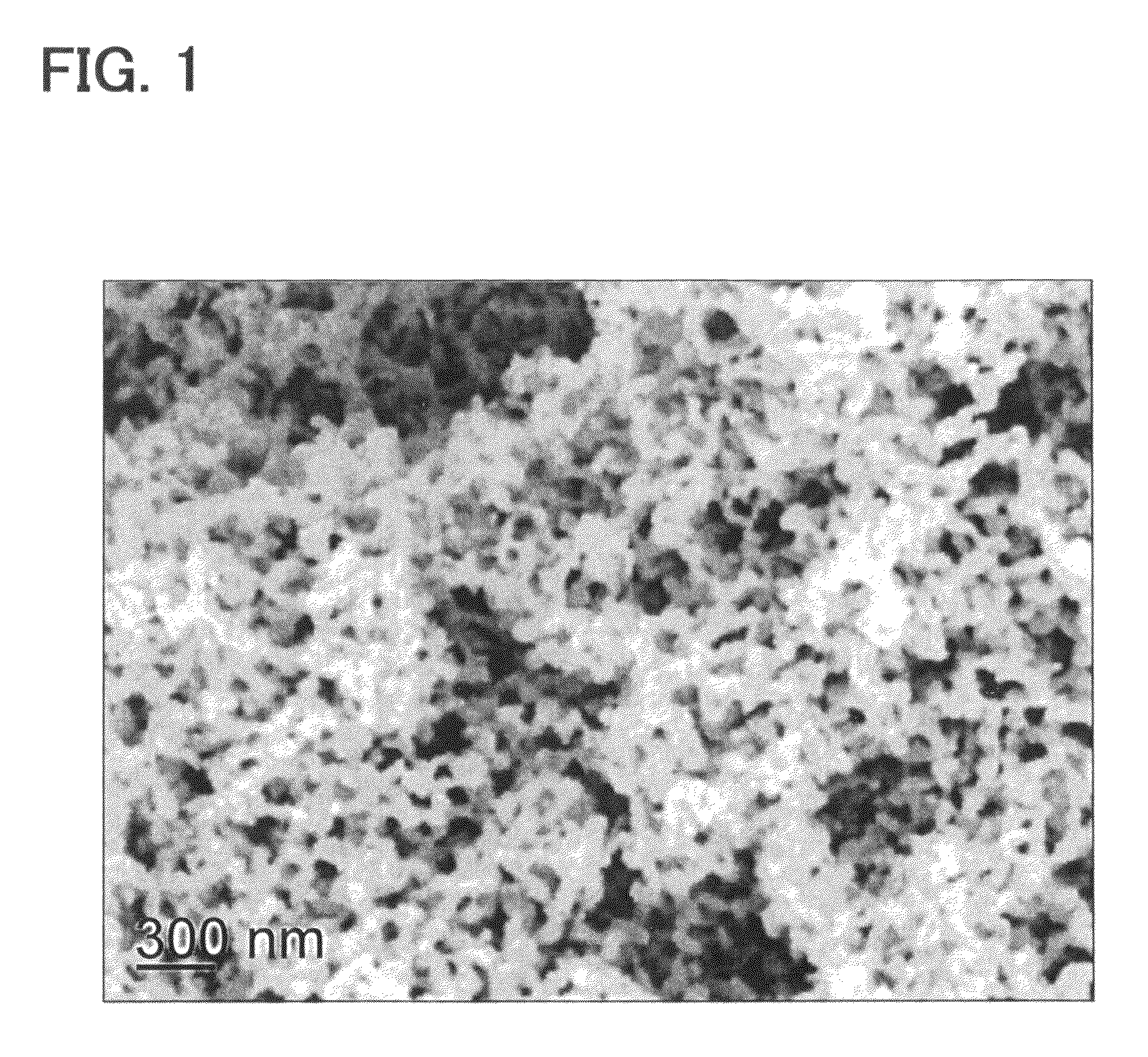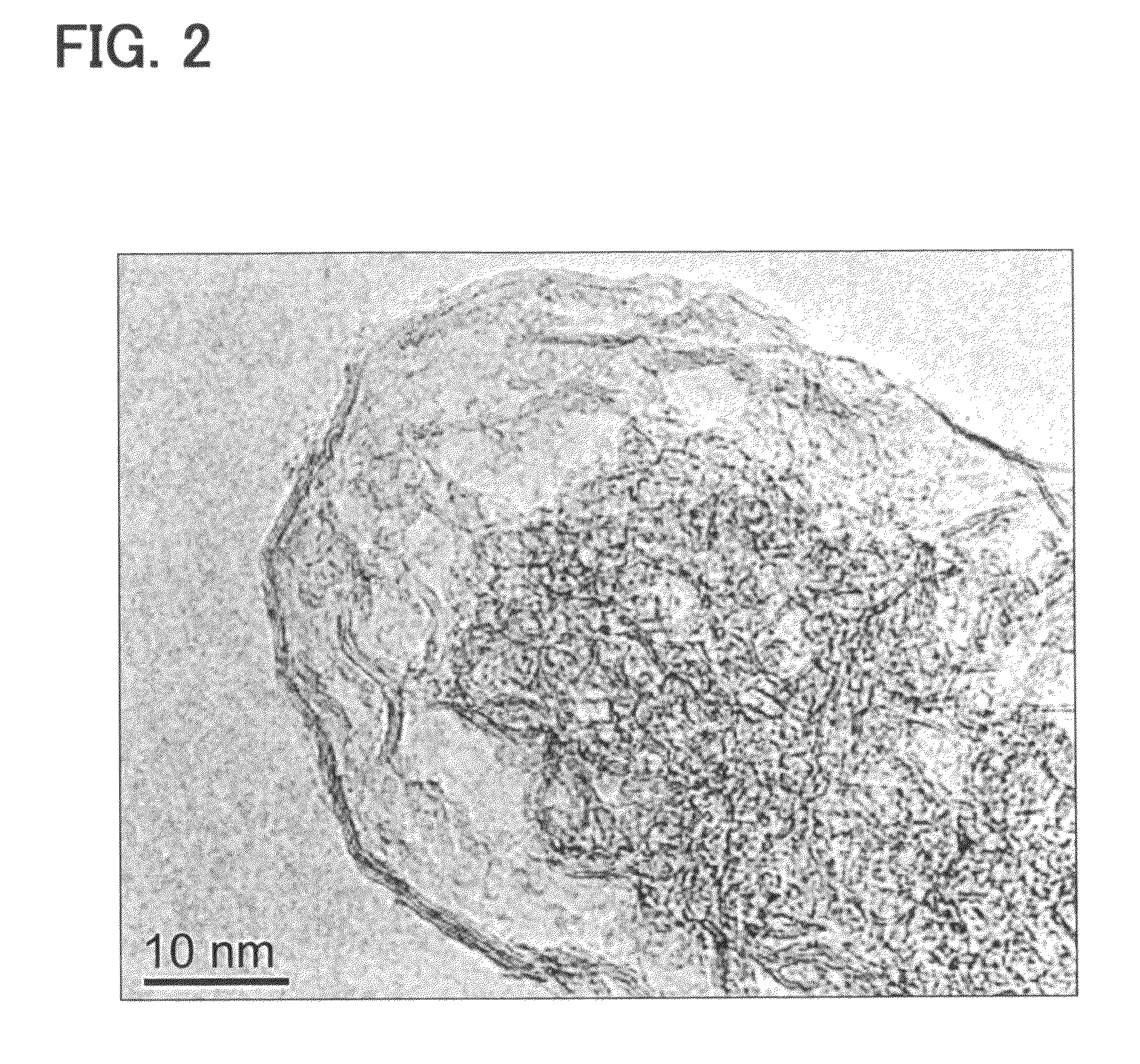Negative electrode for nonaqueous electrolyte solution battery and nonaqueous electrolyte solution battery having the same
a technology of electrolyte solution and negative electrode, which is applied in the direction of primary cells, electrochemical generators, cell components, etc., can solve the problems of increasing the volume of active materials, reducing the cycle characteristic, and requiring active materials to have a further higher capacity, etc., to achieve stable electric conduction, reduce the influence of sliding or cracking, and reduce the effect of cycle characteristi
- Summary
- Abstract
- Description
- Claims
- Application Information
AI Technical Summary
Benefits of technology
Problems solved by technology
Method used
Image
Examples
first embodiment
[0077]A porous carbon material is manufactured by using a method disclosed in CARBON47 (2009) 306-312.
[0078]Specifically, silver nitrate (I) is dissolved in ammonia water solution. Ultrasonic vibration having 20 kHz is given while acetylene is introduced with a flowing speed of 50 ml / min. Thereby, white-yellow colored solid having a dendritic shape is produced. The solid is heated so as to separate silver, thereby a porous carbon material made of a meso-porous carbon nano dendritic object (MCND) is manufactured.
[0079]A micrograph (TEM photograph) of the manufactured MCND is taken and observed. The TEM photograph is shown in FIGS. 1 and 2. The MCND itself has pores, and cavities having dimension larger than dimension of the pore are defined between the MCNDs.
[0080]The manufactured porous carbon material has a tap density of 0.12 g / cm3. An average pore size is measured as 4.1 nm, and a pore volume is measured as 1.84 cm3 / g, through BJH method.
[0081]Pore distribution and pore volume ar...
second embodiment
[0087]A negative electrode and a battery are produced similarly as the first embodiment except for changing a ratio of the porous carbon material to the metal carbon composite material. The ratio is set as 1 mass % in a second embodiment. According to the second embodiment, the metal carbon composite material has an average particle diameter of 17 μm. The tap density, the pore volume and the average pore diameter of the porous carbon material are approximately the same as the first embodiment.
third embodiment
[0088]A negative electrode and a battery are produced similarly as the first embodiment except for changing a ratio of the porous carbon material to the metal carbon composite material. The ratio is set as 10 mass % in a third embodiment. According to the third embodiment, the metal carbon composite material has an average particle diameter of 15 μm. The tap density, the pore volume and the average pore diameter of the porous carbon material are approximately the same as the first embodiment.
PUM
| Property | Measurement | Unit |
|---|---|---|
| diameter | aaaaa | aaaaa |
| diameter | aaaaa | aaaaa |
| diameter | aaaaa | aaaaa |
Abstract
Description
Claims
Application Information
 Login to View More
Login to View More - R&D
- Intellectual Property
- Life Sciences
- Materials
- Tech Scout
- Unparalleled Data Quality
- Higher Quality Content
- 60% Fewer Hallucinations
Browse by: Latest US Patents, China's latest patents, Technical Efficacy Thesaurus, Application Domain, Technology Topic, Popular Technical Reports.
© 2025 PatSnap. All rights reserved.Legal|Privacy policy|Modern Slavery Act Transparency Statement|Sitemap|About US| Contact US: help@patsnap.com



